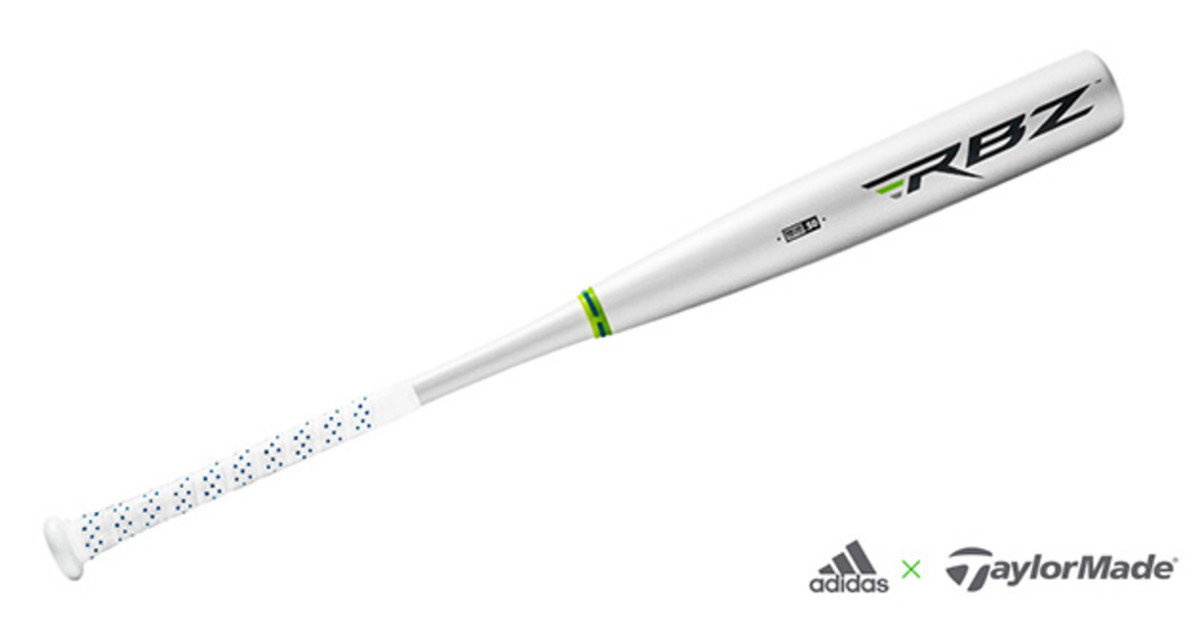Tech Talk: Adidas, TaylorMade team up to design carbon fiber baseball bat

TaylorMade Golf studies swing—they know materials, weight distribution, how to leverage carbon fiber and maximize airflow.
Adidas took the research and development strides made by TaylorMade and fed the knowledge learned to its research lab outside of Boston, expanding on TaylorMade’sRocketBallz technology to design a new carbon fiber baseball bat, the EQTx3RBZ.
With such tight regulations placed on non-wood bat performance, John Byrne, Adidas’ director of hardgoods, tells SI.com, that the company focused on creating a bat that players could get through the zone faster than other competitors.
What's behind the technology?
TaylorMade introduced the RBZ technology in golf clubs and has since applied it to hockey sticks; now baseball bats are seeing the application of carbon fiber to minimize weight and maximize strength.
The RocketBallz technology collaboration uses multiple layers of carbon fiber—in the double digits—all at different angles. “The way you angle determines how stiff the barrel is, how much performance you can get,” Byrne says. “If you cut this open, each layer is a different angle of fiber. It is on us as engineers to figure out the perfect angle.”
How does it translate to a bat?
For baseball, power comes in the form of the high-strength, low-weight property of carbon fiber and speed comes in a balanced bat that allows for a faster swing.
Tech Talk: Under Armour introduces smart material in football protection
Looking at the carbon in the barrel, the angling allowed Adidas to play around with weighting. While Adidas—and plenty of others—have long offered aluminum bats and bats with composite materials, going all carbon offers engineers a new wealth of options.
“We were playing with the center of gravity,” Byrne says. “You don’t want to be too light, too heavy. We have a whole performance lab with performance cannons, durability cannons, balances to calculate our center of gravity to find the perfect balance point.”
Using TaylorMade software technology to simulate the flow of air over the barrel, engineers optimized the barrel profile too, with a long, straight section. “With carbon, changing the layers, how you orient, you can play with how long that sweet spot can be,” Byrne says.
Removing the threat of an end-heavy bat, all within the specs dictated by governing regulations, allows players to get the bat through the zone quicker.

What other materials are involved?
At the lower end of the bat’s barrel, where the carbon connects with the handle, Adidas built in what it calls an Energy Recoil System to dampen vibration and the wasted energy that comes with it.
The Adidas bat gets constructed in two pieces, so Adidas threaded the connection and then bonds it. Adidas engineered a material to meld between the threads to “eat up vibration that travels through the barrel to the handle.”
What’s next for the technology?
Adidas launched the EQT x3 RBZ at the College World Series in Omaha and plans for a summer roll-out of the bat, built to the specifications that make it legal in the NCAA and high school leagues. Expect added variations in the future that fit regulations for all age groups.
Tim Newcomb covers stadiums, design and gear for Sports Illustrated. Follow him on Twitter at @tdnewcomb.
